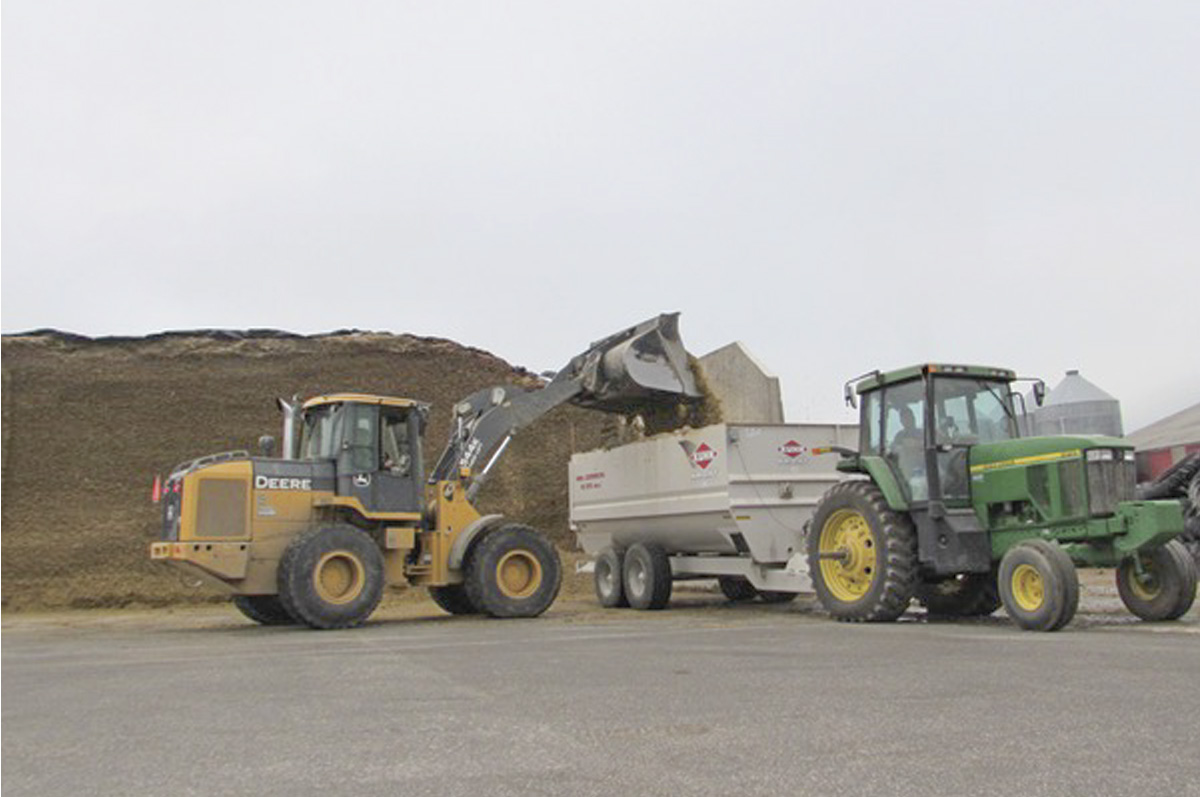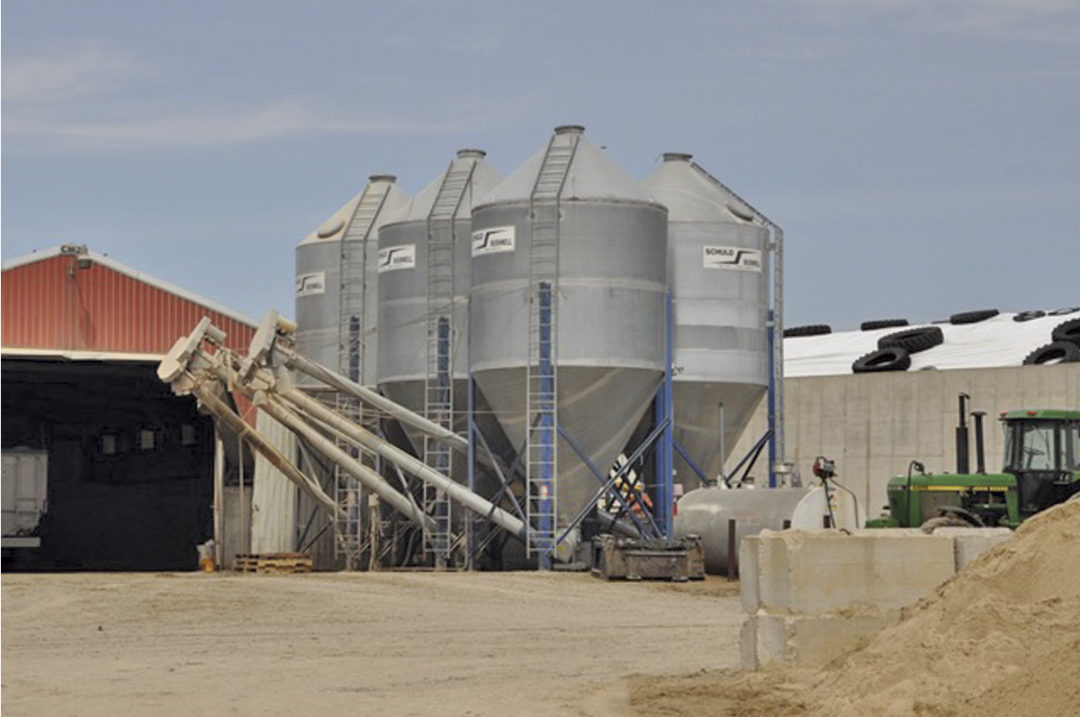As many parts of the U.S. continue to face drought, farms and their nutritionists must make difficult decisions to help optimize performance under less-than-ideal circumstances. Research demonstrates that high-forage diets are optimal, with ideal feed efficiency. But circumstances out of farms' control - such as lacking forage supplies or access to only drought-stricken forages, may force the implementation of a low-forage diet.
“Less than 50 percent total diet forage might be considered a low-forage diet, but the proper consideration is based on the forage Neutral Detergent Fiber (fNDF),” shares Kirby Krogstad, a PhD graduate student in the Department of Animal Science working in Dr. Barry Bradford’s laboratory at Michigan State University. “A diet with forage NDF below 16-17 percent is lacking the forage fiber cows require - especially older cows.”
Krogstad is no stranger to NDF. He and Professor Bradford authored a three-article series on this measurement of cell wall in plant tissue, in 2022. (Getting the most out of your forage evaluation: Understanding NDF digestibility, Making use of NDF digestibility analyses for dairy cattle diets and Sould dairies utilize grasses to increase forage NDF digestibility?) His broader research is on dairy nutrition and health and has included investigation of animal feeding strategies, dairy cow inflammation, metabolism and physiology.
While Krogstad shares that, “drought-stressed silages and forages seem to have a little better digestibility”, this isn’t necessarily a good thing if fNDF is low. When diets get under 16 or 17 percent fNDF, Krogstad recommends some key areas herd managers should monitor, as well as actions farms should take to ensure that a low-forage diet doesn’t spiral into bigger animal health and economic challenges for the herd.
Monitor the total starch and sugar of the diet
The total carbohydrate load in the rumen is not usually of concern, but low-forage rations offer less forage fiber or less effective fiber. So the cow can handle less starch and sugar in the rumen because she is less able to buffer it.
“Here in Michigan, we feed a lot of 30-32 percent starch diets. If we can’t feed enough forage fiber, a cap around 26 percent starch should be the max, and then find the sweet spot for your farm from there,” Krogstad suggests.
Managers and their nutritionists should also consider the source of diet starch.
“Dry ground corn is not as fermentable in the rumen,” Krogstad says. “But high-moisture corn, flaked corn, and other processed corn are very rumen-degradable, and we want to avoid those even more in a low-forage diet because they are so fermentable.”
Krogstad also recommends sourcing as much effective fiber as possible and avoiding over-chopping. Dry hays, grass hays, and even cottonseed work well in scenarios where effective fiber and chewing capacity are needed. And over-chopping should be avoided in diets with only a small amount of really digestible forages. Maintaining particle length is important to keep the animals chewing their cud.
Provide more ruminal buffers
Sodium bicarb or other salts can help stabilize rumen pH. These are critical in such low-forage scenarios.
While this effort adds cost, Krogstad reminds managers, “When we cut cost, we often cut performance as well. We need to feed cows to optimize their performance. If that means adding a little bit more cost so that you can get that extra pound of milk - it’s almost always worth it on a marginal cost.”
Monitor milk fat and score manure
Managing expectations of milk fat volume from cows on a low-forage diet can help ease the transition.
“In the research when feeding a low-forage diet, milk fat is where energy-corrected milk loss comes from,” shares Krogstad. “We lose some milk fat because we have some sub-acute acidosis or maybe we’ve pulled some fat out of the diet so we’ve got less fat in the tank.”
However, dairy managers can still maximize milk fat to the best of their abilities, considering the situation at hand. Scoring manure and ensuring fecal consistency and fecal starches aren’t getting out of line when pushing more concentrates through cows can help steady the animal response.

Rock River Laboratory working from bunker at Rosy Lane. Photo provided by Rock River Laboratory.
Consider testing the feeds more often
Implementation of a low-forage diet lowers the margin for error. “If feeding byproducts such as dry distiller’s grains, etc., and you’re sourcing from a commodity agent, you might get three percent fat one time, but the next time might be 10 percent fat - and you’re going to get hit pretty hard in your milk fat test,” Krogstad explains.
A low-forage diet lacks the forage fiber needed to buffer such variation. As such, Krogstad suggests testing byproducts or feeds that have the potential to be high in unsaturated fat so that the rumen isn’t overloaded.
Ration consistency and particle size
Now is the time to tighten the screws on the feeding management practices. Feeders should make sure the mix is consistent from end to end and cows have access all day.
“If there is a mixing error at one end of the bunk where all the corn and mineral got dumped and the other end has all your drought-stricken forage, you’re going to have a whole variety of problems in that pen,” Krogstad says. “Or, if feed is away from the bunk, and cows don’t have access overnight, you run the risk of slug feed really hard in the morning - causing even more challenges.”
Krogstad also stresses the importance of using a shaker box to monitor the consistency and particle length.
Farm meetings can become especially important to avoid errors when herd nutrition is at stake and circumstances aren’t ideal. Krogstad recommends managers, feeders and their nutritionists should consider discussing the following questions to keep the herd nutrition in check:
- What are some regional alternative forage options that can be purchased?
- What byproducts are available and are they competitively priced?
- Is there room to store these new ingredients?
- How have feeders been doing? Is the mix consistent in the bunk? Has feed been available to the cows throughout the day?
- What’s the stocking rate of the pens?
- Is feeding management really tight?
- Is the mixing order correct?
- Is mixing time optimized and has it been double-checked?
Working through these questions and monitoring and managing the aforementioned control points may not make it rain. But, these efforts can optimize herd performance on a low-forage diet, helping animals (and farm staff) remain stable even in a transitional, droughty year.
Those interested in learning more about the Bradford lab’s work should visit Dairy Metabolism Group (msu.edu). Plus, access other helpful dairy resources and sign up for the MSU Dairy Extension newsletter at: https://www.canr.msu.edu/dairy/




